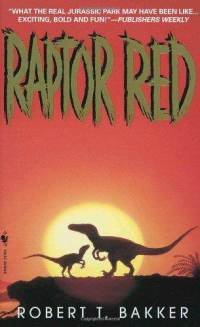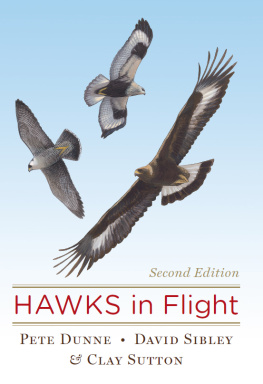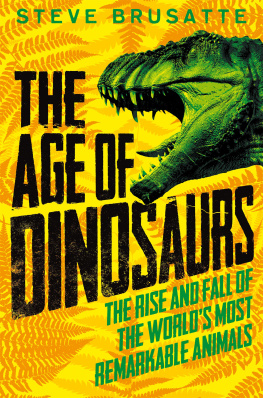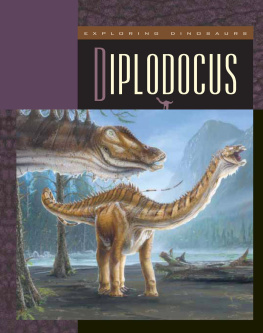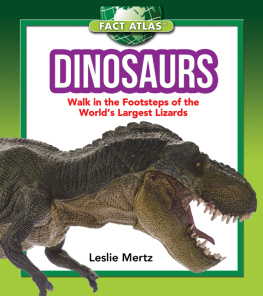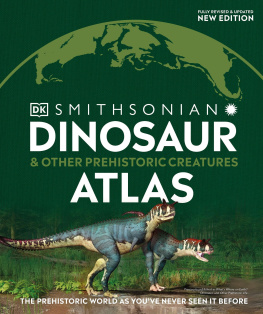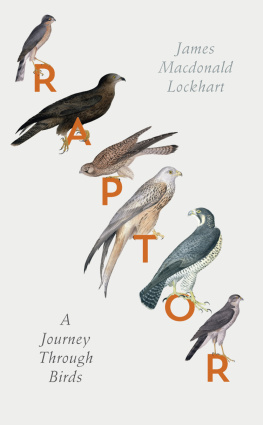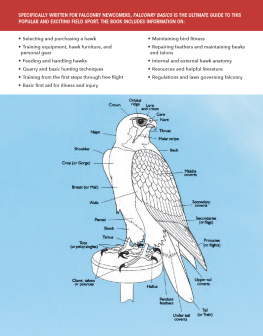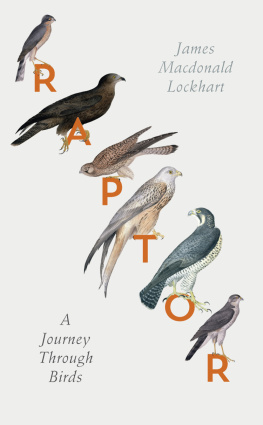This book is dedicated to all the amateur fossil-hunters who donate their weekends and vacations to enlarging our appreciation of the past. In Wyoming we call them the Jurassic Irregulars. They work long hours without museum salaries, without government grants, and all too often without appreciation from the Ph.D.s, and. yet these amateurs are discovering new dinosaur species every summer.
Most of the time they pay for their own gas and drive their own pickups into the badlands. When we open up a new quarry, they contribute bags of plaster and bundles of burlap. Those of us fortunate enough to work full-time in small western museums rely on volunteers at every stage in the exacting process of cleaning the fossils, interpreting the anatomical facts, and clothing the bones with flesh and skin.
I started thinking about Raptor Red when I heard that a veteran amateur fossil-hunter had discovered a remarkable dinosaur. Raptor Red has come back to life thanks to such people.
Call her Utahraptor.
Thats what I suggested to my colleague, Dr James Kirkland of the Dinamation Society, over the phone on a January afternoon in 1992. Jim was ecstatic about a giant fossil claw just dug up by a talented amateur, Bob Gaston, in red-gray rocks of Early Cretaceous Age. It was a raptor claw.
The bone bed was in Utah, a state with a glorious history ofdino discoveries, so the name Utahraptor popped into my head. And for some reason I automatically thought of the beast as a female.
Why dont you call her Utahraptor? You know, "The Hunter of Ancient Utah." He did.
I knew raptors well. When I was a freshman at college, back in 1964,1 helped excavate a raptor pod in Montana -four skeletons intertwined in death, each animal about nine feet long and maybe 120 pounds weight when alive. Raptors were bantamweight dinosaurs, small and compact in the body but equipped with weapons of exceptional deadliness. They were kick-boxers. One claw on each hindfoot was transformed into a big curved knife that could disembowel prey with a single stroke.
These Montana creatures were named Deinonychus - terrible claw. Speed and agility were other raptor characteristics. The first raptor species ever found was the 'Mongolian speedy raptor/ Velociraptor mongoliensis, excavated from the fossil sand dunes of the Gobi Desert in the 1920s. Velociraptor was even smaller than the deinonychs, only fifty pounds or less. But Velociraptor shins and ankles were long and strong, a design specification that ensured high running speed. And all the raptor species had tails that ended in elongated stiff rods, balancing poles that let the animal engage in all sorts of nimble acrobatics.
It became customary in some paleontological circles to use velociraptor for all the species in the family. Or just simply raptor.
All raptor species were masters of martial arts. They could twist and turn while running at high speed, and they had the capacity to jump while changing direction in midair. Raptor hands were powerful and supple too -the combination of hand claws for grabbing and hind-claws for kicking was formidable.
The raptor family was exceptional among the Dinosauria for yet another reason: These were smart carnivores. In the 1960s, anatomists probed the inside of raptor braincase bones and found to their surprise that the raptors brain was as large for its body weight as it is in many modern ground-running birds.
Finding any raptor bone is a treat for us bone-diggers. But what Gaston and Kirkland had just identified in their workshop was something so spectacular, no scientist had ever dreamed of it. They had found the first giant raptor.
Their claw was from a beast twice the size of any other member of the family and must have been carried by a body five hundred to a thousand pounds - eight times heavier than a deinonych. It was the find of a lifetime.
The claw weve got - its huge! I could hear Jim jumping up and down at the other end of the line, and I started jumping up and down too, because I knew something he didnt. Jim, Jim- Jim! 'I yelled. 'You just found Spielbergs raptor.
Huh?
You just found the giant raptor Spielberg made up for his movie, you know - Jurassic Park.
Jim thought I was daft. He didnt know about the other phone call I had gotten about giant raptors that morning. It was from one of the special effects artists working in the Jurassic Park skunk works, the studio where the movie monsters for Spielbergs film were being fabricated in hush-hush conditions. The artists were suffering secret anxiety about what was to become the star of the movie -a raptor species of a size that had never been documented by a real fossil.
No one outside the studio besides me knew about the problem with Spielbergs giant raptor. No professional dinosaurologist was aware of the supersize raptor being manufactured for the movie.
The special-effects artists were superb dino-anatomists. Its funny how some of the best thinking about dinosaur shape and dinosaur movement have come from movie artists. Even the 1933 King Kong had some brontosaur sequences that were a generation ahead of the dinosaurian dogma taught at the time in universities. The artists doing Jurassic Park wanted the latest info on all the species they were reconstructing They wanted everything to be right. Theyd been calling me once a week for months, checking on teeth of T. rex and skin of Triceratops. Id sent them dozens of pages of dino-details.
The artists were up to date in their raptor knowledge.
They knew that deinonychs were the largest, and that no raptor was bulkier than the average adult male human. Just before Jim called, Id listened to one artist complain that Spielberg had invented a raptor that didnt exist. Apparently Spielberg wasnt happy with the small size ofreal' raptors - he wanted something bigger for his movie. He wanted a raptor twice as big as Deinonychus.
Id tried to calm the artists misgivings. You know, evolution can change size real fast. Its not impossible that a giant raptor could evolve in a geological instant. So maybe, theoretically, Spielbergs oversize raptor could have happened.
The artist wasnt impressed with my learned argument. He wanted hard facts, fossil data. Yeah, a giant raptors possible - theoretically. But you dont have any bones.
But now Jims Utahraptor gave him the bones. The fossil beast from Utah turned out to be almost exactly the same size as the biggest raptor in the movie, an animal referred to in the script as the bigfemale.
Jim got back to work at the quarry, assisted by Don Birge, director of the museum at Price, Utah. Soon Don and Jims crews had hand bones, foot bones, backbone, shinbones, and parts of the muzzle of their superraptor. They made a quick sketch of the entire critter, nose to tail. Not only was the Utahraptor huge by raptor standards, but it carried the most lethal weapons in its hands. The foreclaws had much sharper edges and worked like a set of six recurved carving knives.
In a few weeks Utahs giant raptor made the front page of The New York Times. And Utahraptor penetrated the worldwide community of dinosaur lovers - within a few days of the announcement, kids and adults all over the world knew the name. The giant raptor was fast becoming the second most famous dinosaurian meat-eater. The first, of course, is still Tyrannosaurus rex.
When the movie Jurassic Park came out at the beginning of the summer of 1993, it became the biggest blockbuster ever and made velociraptor a household word. A significant percentage of the moviegoing public knew that the true star was more accurately called Utahraptor.
This book is the story of Utahraptor, told through the experiences of an individual raptor, a young adult female. Her story is pieced together from the fossil remains of Utahraptor and from clues about her world locked up in Early Cretaceous sediments.

